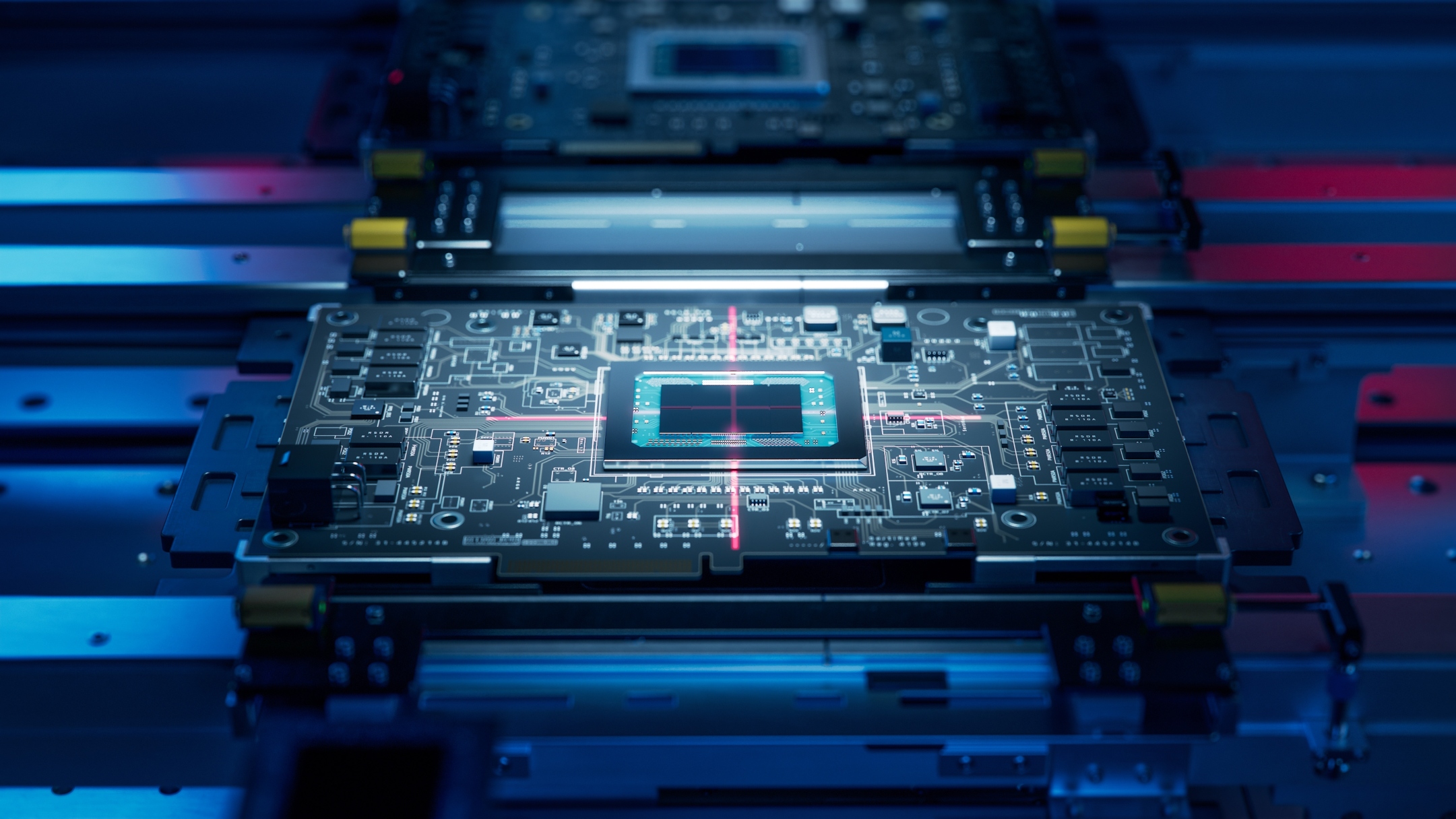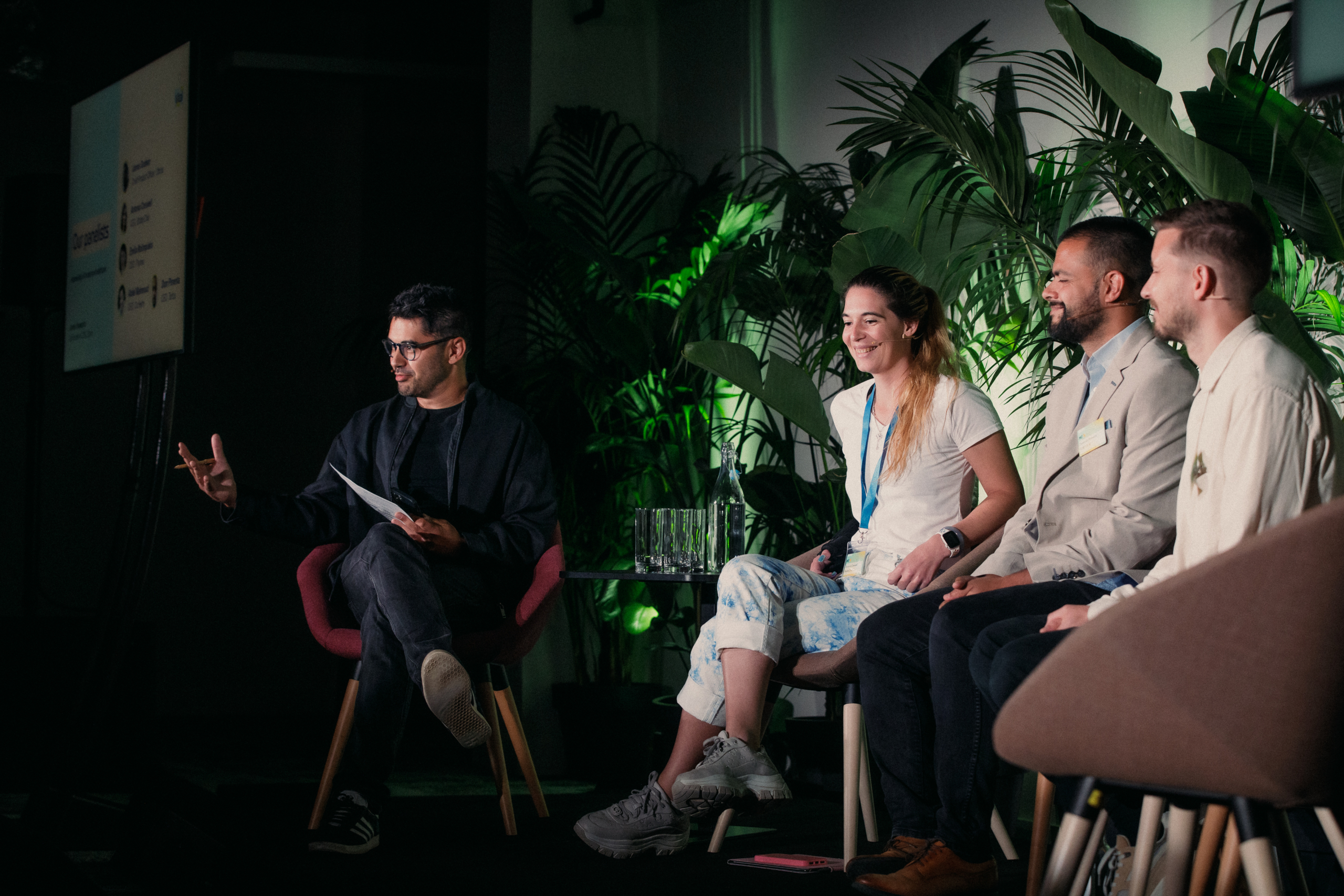The future of compute
We in the Octopus Ventures deep tech team pride ourselves on being the nerds of the family. Like our colleagues, we’re committed to looking beyond the problems of today to find the solutions of tomorrow: searching out pioneers with the vision to address the challenges we face and the ambition to shape the future for the better.
But where our colleagues look for great ideas, ready to take off when the right support is in place, it’s our job to look deeper, into the tech infrastructure underpinning the start-ups and solutions poised to change the world.
This year, deep tech has entered the mainstream like never before. Radical advancements in AI have introduced the public to the incredible possibilities of tech. At the same time, Moore’s law, an observation that has come to govern semiconductor development, seems to be coming to an end. The law states that the number of transistors on a chip will double every two years, with computer speed doubling in turn. What comes next is cause for excitement.
Against all this, the unprecedented threat of climate change must be engaged with head-on. Technology can do incredible things, but it can’t come at the cost of climate security. Software on its own isn’t going to power us into a greener future – we need hardware capable of driving our age of unparalleled innovation forward, even as it lessens the environmental cost.
Over the past six months, we’ve met and backed some incredible businesses, and as ever, we’re on the lookout for more. In this blog I’ll run through a few of our latest investments in the future of compute, but first I want to go into a little more depth on the areas we want to see more of. If you’re a founder and what you read resonates – get in touch. You can find my email at the bottom of the blog.
Climate and compute. An oxymoron?
In a time of climate crisis the reduction of energy consumption and conservation of resources are an essential, shared responsibility.
Two years ago, an academic group in the US suggested that the carbon cost of GPT-3’s training alone amounted to some 552 tons of CO2, and consumed nearly 1,300MWh of energy. Since then, AI has advanced, but the underdiscussed burden of large language models’ (LLM) energy consumption has only grown. As the use of generative AI becomes more widespread, and industry 4.0 drives ever greater interconnectivity, humanity’s energy consumption from compute alone will keep increasing.
The remarkable benefits new technologies stand to bestow cannot come at the cost of the climate, which is why we’re proactively hunting for businesses that are taking on the enormous challenge of the everyday energy cost of compute – via software or hardware.
Breaking this down, specific costs emerge. A common application of AI is the replacement or enhancement of everyday search engines. A single Google search is claimed to emit 0.2g of C02. While per-query estimates for generative AI vary, they all agree that the emissions are higher – anywhere between 2x to 10x that of a Google search. It’s clear that we need more efficient methods to search and categorise data.
As our dependency on the internet grows, alongside the volume of data the world wide web contains, we’re seeing a corresponding scale-up of the server farms which host, process and manage these data sets.
We’re eager to meet founders in both these spaces: founders building efficient methods for searching, or hardware solutions capable of reducing energy, latency and heat from the systems that store the datasets we access online.
The fourth industrial revolution is underway. We want to play our part in ensuring that it happens sustainably.
Doing things differently
Innovation in the semiconductor space is, reportedly, slowing. The much-debated end of Moore’s law is dovetailing with a moment in history when we need more computing power than ever before. At a time like this, innovation needs to increase – not slow.
Chip design needs to be disrupted, and we think RISC-V might hold the key. RISC-V is an open-source instruction set architecture (ISA) which entrepreneurs, chip designers and other innovators can use without the financial burden of proprietary ISAs. ISA is a pivotal layer in chip design which allows software and hardware to talk to each other. The royalty free, open-source nature of RISC-V means that the cost to design new computer chips can be dramatically reduced, and stands to shake-up the whole ecosystem, giving the slow and costly process of chip design the chance to fail faster and more cheaply, and build quicker.
It’s an exciting new development, and one we’re following closely. In VyperCore and Codasip (see below), we’ve already backed two businesses using RISC-V and we’re on the lookout for more. If you’re building something new – from RISC-V to photonics, get in touch. We want to hear about it.
Putting our money where our mouth is
As I wrote at the top, the past six months have been busy for the deep tech investment team. Just as important as highlighting the areas we’re particularly interested in, is calling out some of the businesses we’ve backed, and explaining just what it is that makes them so exciting.
Hardware:
Intrinsic: (investment led by Owen Metters)
- Memory and processors work hand-in-hand across almost every electronic device. But while processor technology has evolved at an astonishing rate, the fundamental technology underpinning memory is nearly 40 years old and can’t keep pace with processor innovation.
- Intrinsic has created a novel memory architecture which is lower power, more compact and built using ubiquitous materials, so it can be integrated alongside cutting-edge processors in a way that isn’t currently possible with today’s available technologies.
- What this means, is that intelligence can be embedded into devices which are smaller, lower power and more widespread than ever before. In other words, Intrinsic’s technology will underpin the next generation of smart, mobile devices.
VyperCore: (investment led by Rubina Singh)
- VyperCore is leveraging RISC-V to develop a new processor design, allowing memory usage to be managed more efficiently and securely by moving memory allocation (or garbage collection) from software to hardware. The technology holds the potential to improve application performance by 10x, whilst also dramatically improving device security and protecting against 70% of hardware-derived cybersecurity attacks.
- Vypercore’s technology can provide improved performance while optimising energy consumption and help reduce the carbon footprint of datacentres. By 2030, the global datacentre market size is expected to grow to over $500bn.
- Garbage collection is an important method of memory management in implementing modern languages such as Python, C# and Haskell, all of which have seen significant recent growth in usage. VyperCore’s technology offers a major benefit in enabling the use of modern languages in real-time and embedded systems.
Software enablers:
Codasip: (investment led by Simon King)
- Today, a useful integrated circuit (IC) chip is an extremely complicated thing – and they’re everywhere. Chips do everything, from helping to run our dishwashers, or getting ChatGPT to help us with our homework, and their optimised, bespoke designs rely on electronic design automation (EDA) tools.
- Codasip have created an EDA specialising in RISC-V ISA.
- We aren’t just excited to back Codasip’s incredible vision for a new world of computing – as I’ve written, we can’t wait to meet all the new RISC-V innovations which will come along as a result of this shift in the landscape.
As I hope I’ve demonstrated, while the investment landscape has undergone some radical shifts over the last couple of years, Octopus Ventures is still very much open for business. We understand that we’ll need more than software to overcome both the global challenges we face, and to keep driving the extraordinary innovation underpinning the fourth industrial revolution.
If what you’ve read resonates, you’re turning cutting-edge research into a world-changing business, or you’d like to learn more about what we do – get in touch. You can click through above to learn more about my colleagues on the deep tech team, or reach me directly at [email protected]














